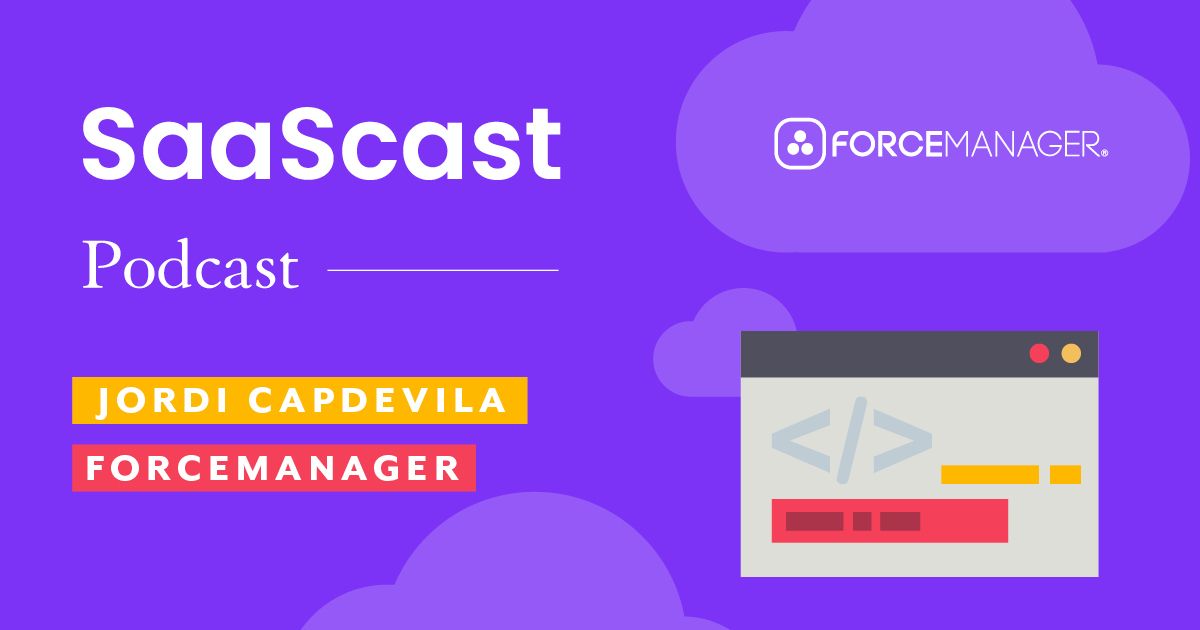Email marketing is a tough nut to crack, especially if you’re a new startup trying to gain traction in an oversaturated market. But with Insider reporting a massive hike in social media ad pricing, it’s time for scaling SaaS startups to get to grips with owned marketing channels.
We’ve all been there. You’re a busy SaaS professional, and your email inbox is already overburdened with urgent emails that need your attention now. What are the chances of opening an email from a startup you’ve barely heard of?
Well, in this article we’re taking you through the steps you need to take not only to reach your customers, but actually convert them into paying customers.
The truth is, email marketing is a powerful tool for generating B2B leads. It allows businesses to reach out to potential customers directly and build relationships with them over time.
However, many B2B marketers struggle with creating effective email campaigns that actually generate leads. In this article, we will explore some tips and strategies for B2B lead scoring through email marketing.
Build a high-quality email list
The first step to generating B2B leads through email marketing is to build a high-quality email list. This means collecting email addresses from people who are likely to be interested in your product or service.
You can do this by offering gated content, such as whitepapers, ebooks, or webinars, in exchange for email addresses.

A solid content strategy can help you set this plan in motion. This is also known as thought leadership, a marketing strategy in which your org positions itself, not just as a cynical cash-grabber looking for rapid conversions, but as a problem solver within the SaaS space.
Find out what the most crucial pain points are for ICP (ideal customer profile) and produce content around solving these problems.
The benefit here is twofold: You’re establishing a positive first impression between your organization and the prospective customer, making it more likely for them to open your emails, and you’re pinpointing your first potential customers.
Segment your email list
Once you have built your email list, it's important to segment it based on factors such as job title, company size, or industry. This allows you to create more targeted email campaigns that are relevant to each segment.
For example, you might create a campaign that is tailored to small business owners or one that is focused on a specific industry.
In a study carried out by HubSpot, it was found that 78% of marketers considered segmentation to be the most effective way to boost email lead generation.
Segmentation is an integral part of making sure that your email campaign targeting is razor-sharp. Your messaging might be great, but if people aren’t reading it, it’s a waste of time.
Make sure you’re reaching the right people
One common error businesses commit is assuming that all marketing emails should be addressed to CEOs. However, decision-makers vary from one company to another.
To avoid this mistake, it’s essential to research and identify the individuals responsible for purchasing products or services similar to yours.
Once you have identified them, target them directly to ensure that your emails reach the right people. This approach will likely result in more effective lead generation and sales outcomes.
It’s also helpful to be aware of the distinction that can exist between buyers and users. Very often there’s going to be an overlap between the two, but let’s say for example you’re selling tools to software developers.

This is a tricky one because the style of messaging that developers respond to is often highly technical and specific to the processes of their day–to-day jobs. But that doesn’t mean that they’re going to be the ones making the decisions.
Conduct thorough research into your buyer personas and tailor your messaging around that.
"A small list that wants exactly what you’re offering is better than a bigger list that isn’t committed."
Ramsay Leimenstoll, Investment Advisor
Solve real problems
A major reason why emails go unopened is simply because they're unnoticed, especially for B2B SaaS companies. The companies that you’re attempting to convert are going to receive a high volume of emails every single day.
In order to compete with the high volume of urgent emails that a business is going to receive each day, it’s crucial that you ensure your emails are specifically targeted to solving a very real problem that prospective customers are having.
Remember that your email may well also seem like an annoyance cluttering up their inbox, so it's important that the value of your email’s content outweighs the burden you're creating in their day.
Minor mistakes are major
Making mistakes in messages can be awkward. It becomes even more critical when those mistakes are sent to a large group of people, as it can cause your emails to end up in spam folders.
Repeated mistakes can even result in your email address being blacklisted, which can be a headache to fix.
First impressions are really important, and if your emails don’t have the surface appearance of professionalism, it’s going to get discarded pretty quickly.
Crafting a compelling subject line
The subject line is the first thing that your email recipients will see, so it's important to make it compelling.
Your subject line should be short, attention-grabbing, and relevant to the content of your email. Avoid using spammy language or making false promises, as this will only hurt your credibility.
Ensure that customers are going to be aware of who is sending their email ( your company name is better than an individual's name). If your lead has already had a really positive experience with your company through an awesome whitepaper you produced, that’s not going to matter unless they know that the email is coming from your org.
Appeal to the customer as an individual with needs. Firstly, address the lead directly and refer to a specific problem that they might have, don't talk about some theoretical problem that other people might be having.

For example: ‘Hot tip: 90% of startups fail.’
What’s wrong with this? Although the subject line may be in the right area, it’s not drawing the reader's attention to a specific problem that your product can help them solve.
Instead, try this: ‘Are you struggling to cut your churn rate down to size?’
Now the problem is more specific and it addresses the reader directly. Your email might be a problem for your lead at first, but the problem that your highlighting is far more significant. The email message is transformed from problem to problem-solver.
This falls under the banner of personalization. Let’s dig deeper into that now.
Personalize your emails
In the aforementioned HubSpot study, personalization was highlighted as a determining factor in email marketing success. Include the recipient's name in the email and tailor the content of the email to their specific needs or interests. You can also use dynamic content to show different content to different segments of your email list.
This is where the segmentation work that you’ve done is really going to come into play. Let’s say your product is customer onboarding software, for example. A segment of your audience might be customer success managers, whilst another section might be high-level C-Suite types.
Although a CSM’s daily practices are going to tie pretty significantly to the broader concerns of your organization, they might not be at the very forefront of your CSM’s mind.
Instead, they’re going to be more concerned with actions that they take on a day-to-day basis in order to keep customers engaged.

For C-Suite level types, on the other hand, you’re probably going to want your messaging to be more tied into how exactly your software is going to help the business boost those bottom-line metrics.
One way to personalize emails is by using merge fields, transferring essential customer data into your email, although this should be done sparingly to avoid errors and potential discomfort for the recipient. It’s also essential to be cautious when including too much personal information about the prospect.
Remember one of your primary goals is to initiate the conversation with your prospects. Imagine this in an in-person situation. If the person you’ve just met seems to know too much about you,
Is this the kind of person that you’re going to want to continue a relationship with? Almost certainly not.
Provide valuable content
Your email campaigns should provide valuable content that is relevant to your audience. This might include industry insights, case studies, or product demos.
Your initial goal should be to educate your audience and provide them with the information they need to make informed decisions, but your ultimate goal is to demonstrate your brand’s expertise so that prospects might consider converting.
You can wax lyrical about the value of your solution, but the problem is, everybody’s going to be doing that. Where’s the proof? Well now’s your chance to provide it. But ensure to show it in a digestible, and not overly sales-y format.

Product demos can work great because they can allow users to find tangible proof of your product’s value, and that ultimately is going to be the deciding factor in whether a prospect becomes a paying customer or not.
Consumers have so many solutions to choose from now, and although links to slick, professional-looking landing pages aren’t going to hurt, it’s the speed at which the user can tangibly experience how your product is going to benefit their lives that’s going to set your product apart from the rest.
Include clear calls-to-action
Your email campaigns should include clear calls-to-action (CTAs) that encourage recipients to take action. This might include signing up for a free trial, scheduling a demo, or downloading a whitepaper. Your CTA should be prominent and easy to understand.
Again, it’s important to understand the psychology of your potential customers. Just because the lead didn’t respond to your email doesn’t mean that they’re not interested or impressed by your pitch.
They’re simply being inundated with competing information every day with only a limited amount of time. In a recent study by Litmus, it was found that the average person spends just nine seconds looking at an email.

If your message doesn’t contain a clear CTA, they’re not going to spend more than a minute looking for it. Make it clear and obvious where your user needs to go to interact with your product and minimize friction in every step of the process.
Crafting persuasive messaging is the hard part, so don’t undo all your hard work by falling down on the easy part.
Automate emails
In order to keep lines of communication open, you’re going to have to commit to sending follow-up emails. Bear in mind also that prospects who respond positively to your email might simply forget to follow through on trying and adopting your product, and follow-ups act as useful reminders in these instances.
This is where automation comes in. Sending countless follow-up emails as well as the initial emails that you're sending out is time-consuming.
As a result, introducing an email automation tool into your tech stack can really prove to be an effective way to both make that first touch with unengaged leads and encourage hot leads to take those next steps.
Test and refine your campaigns
Finally, it's important to test and refine your email campaigns over time. Use A/B testing to test different subject lines, email content, and CTAs. Analyze your results and use this data to improve your campaigns going forward.
The process of refining and iterating is a continuous process, and you need to be aware that the needs of your target audience are not necessarily going to remain the same. If you find something that works, repeat it, but be prepared to pivot and experiment when it doesn’t work anymore.
Message at the right time
This falls under the umbrella of conducting thorough persona research. Think about your industry, is it more prominent in a specific region? There might be gaps in specific regions that you're trying to fill.
But whatever the case, ensure that you're mindful of time zones and whether your target is even going to be present to receive your message.
But you should go even deeper than this. Through your research, you can pinpoint the times of day when your prospects are likely to be checking and replying to emails.
Again this might differ depending on your region and industry. By being familiar with the part of the world that you’re targeting you can make your campaigns super-targeted and tie them into culture-specific holidays and events.
Track, track and track again
Marketing in the future will rely heavily on data. When conducting an email marketing campaign, it’s crucial to measure various metrics such as emails sent, open rate, clicked links, replies, bounce, opt-out, click-through rate and conversion rate.
Additionally, utilizing UTM tracking links can help identify where traction is coming from and segment new leads. It is also important to measure any other relevant metrics to improve the campaign's performance.
Luckily, most software platforms offer report generation, making it easier to access data points. Accurate tracking and reporting can turn lead generation into predictable lead generation, but it may take time to perfect.
Get the handover right
Don't make the mistake of assuming that handing over new leads to the sales team is a simple process. Doing so can undo all the hard work you've put in so far. Instead, it's important to ensure that the data you've collected throughout the campaign is assigned to the appropriate lead and salesperson.
To achieve this, we suggest utilizing a CRM system. First, assign all relevant information to the new lead. Next, assign the lead to the appropriate salesperson, even if it means specializing within the sales team.
Finally, include any additional information that may not be captured in the data in a handover note to ensure the sales team has all the knowledge they need to succeed.
Enjoyed this article? Why not check out our exclusive content from leading SaaS professionals with a Future of SaaS membership? 👇





